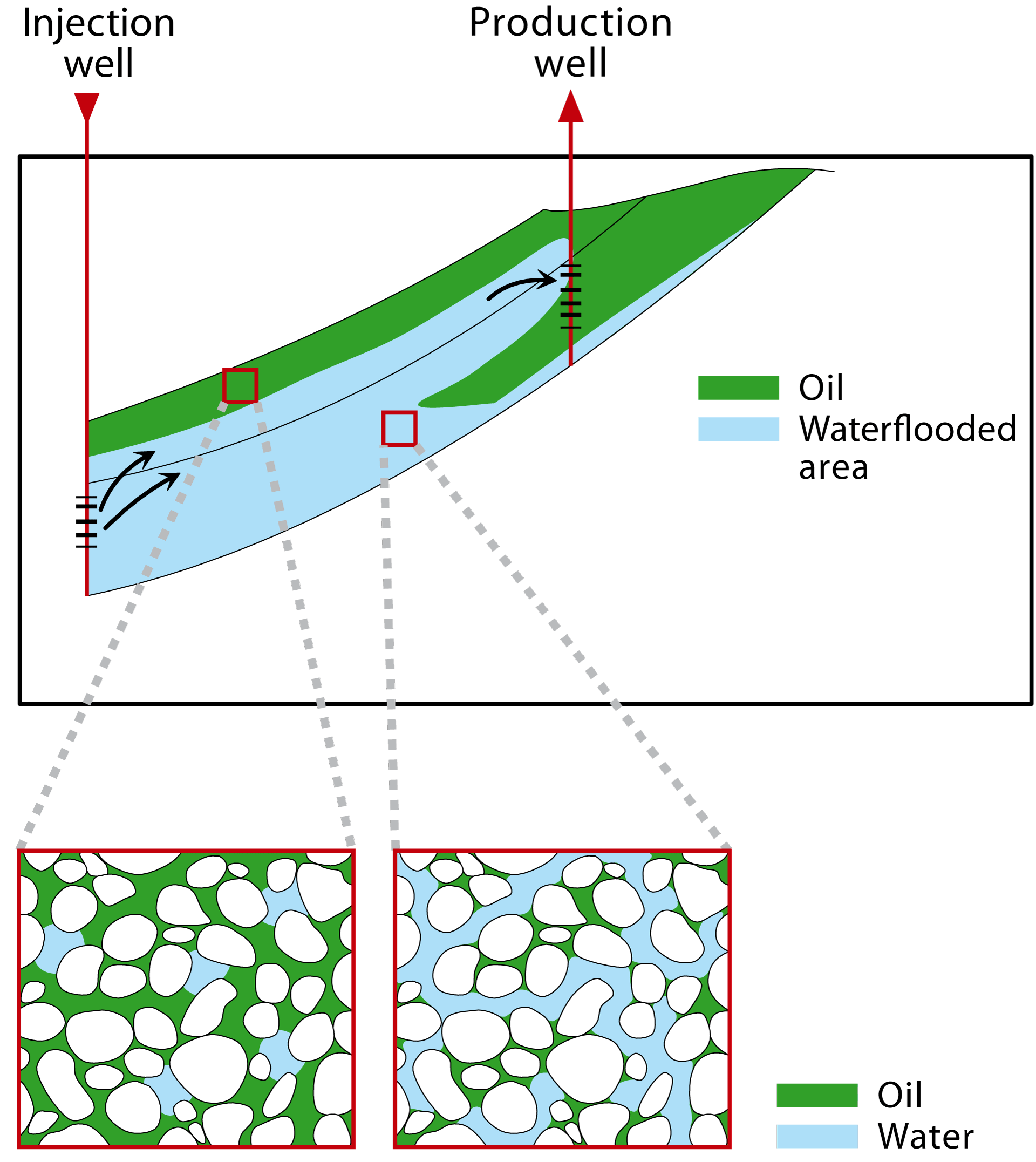Why do we not recover all the oil?
To ensure a high recovery factor, good utilisation of the resources and value creation from the fields, access to appropriate technology, sufficiently qualified personnel and ability to take decisions are essential.
The recovery factor for oil is a target for how great a proportion of the oil can be recovered.
The in-place volumes and the volumes assumed to be recoverable are both used to calculate the recovery factor. Uncertainty is attached to both these quantities, especially in the early phase of a project.
The various oil companies, moreover, often calculate the in-place volume differently, thus making it difficult to compare the recovery factor from one field to another. Changes in the recovery factor over time are, nevertheless, an indicator of the effort made by the licensees to enhance recovery.
Needs assistance
The oil occupies minute pores in the rock forming the reservoir. In an oil reservoir, between 60 and 90 per cent of the pore volume is filled with oil and the rest with water. To be able to produce the oil, the oil that is in the pores must be displaced by something else. This can take place by natural seepage of water when the pressure drops or a when gas cap expands.
Generally, water or gas must be injected to achieve adequate displacement.
Even when good displacement is present, some oil will remain in the pores. How large this residual oil saturation is will depend upon the properties of the rock and the oil, and also the properties of the displacing substance.
Microscopic displacement efficiency describes how efficiently an injected fluid (for example oil or gas) displaces oil in the reservoir. When we talk about microscopic displacement efficiency, we focus on small scales, like the pore scales in the rock. Variations in reservoir rock properties and fluid properties can affect this efficiency.
Various factors play a role
In addition to the oil that remains where efficient displacement is present, there will be areas in the reservoir where displacement will be less efficient and areas where the displacing medium does not reach. The shape and extent of the reservoir, how the quality of the reservoir rock varies and where the production wells are placed determine the efficiency of the displacement.
Normally, this is divided into the vertical displacement efficiency, which is mainly controlled by the stratification in the reservoir, and the horizontal displacement efficiency, which is controlled by the shape and extent of the reservoir and by faults.
Figure 4.1 below illustrates how the displacement can act both on the pore level and on the larger scale.

Section through a reservoir showing an example of the distribution of oil and water following water flooding, and the distribution of the liquids at the pore level.
The table shows examples of the recovery factor with different values for the various parameters. If the recovery factor (R) is to be changed, at least one of the component factors must be changed.
Good knowledge of the reservoir is required, and comprehensive studies will be needed to calculate the effect of a measure and whether it is cost efficient.
Estimation of recovery factor:

Read more
Updated: 22/07/2024